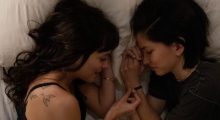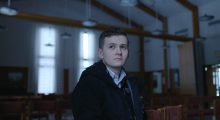Interviews
Interviews
-
“We chose to embrace the armpits of Los Angeles”: DP Jeff Bierman on Emily the Criminal

In John Patton Ford’s Emily the Criminal, a woman saddled with student debt and minimal job prospects owing to a minor criminal record turns toward the black market to make her living. As cinematographer Jeff Bierman explains, capturing the unglamorous Los Angeles the protagonist inhabits in the August heat was a crucial part of emphasizing the gulf between the dream of success and the reality of pursuing it. Filmmaker: How and why did you wind up being the cinematographer of your film? What were the factors and attributes that led to your being hired for this job? Bierman: John and I […]
-
“We Wanted to Keep the Film Grounded”: DP Cristina Dunlap on Am I Ok?

In Am I Ok?, the directorial debut of Tig Notaro and Stephanie Allynne, a pair of best friends have their lifelong friendship suddenly confused by one taking a job offer in London and the other coming out of the closet to confess her romantic feelings. Below, cinematographer Cristina Dunlap discusses how she avoided the stereotypical overlit comedy without making the film too serious and burying the jokes in the process. Filmmaker: How and why did you wind up being the cinematographer of your film? What were the factors and attributes that led to your being hired for this job? Dunlap: The script […]
-
“I’ve Always Loved the Editing Style in a Lot of 1970s American Films”: Editor Suvi Solja on The Mission

The Mission focuses on four missionaries of the Church of Jesus Christ of Latter-day Saints working in Finland. In addition to the often frustrating day-to-day missionary work, director Tania Anderson also captures the missionaries on the eve of their departure, during their Finnish language lessons and on their welcomes home. Editor Suvi Solja discusses the challenges of piercing the nonchalant façade of the subjects and the decision to include a voiceover in the film, as well as why she frequently watches the opening of Bob Fosse’s All That Jazz. Filmmaker: How and why did you wind up being the editor of […]
-
“By Limiting the Toolset We Were Ultimately Enhancing the Protagonist’s Point of View”: DP Antti Savolainen on The Mission

For her first feature documentary, Tania Anderson became the first filmmaker to receive approval to film Mormon missionaries. The Mission brings viewers along with four American teens as they make contact and proselytize in Finland, reflecting on their work, themselves and the world in the process. DP Antti Savolainen explains his unusual lens choice for the documentary and why intentionally limiting his options was in service of the film. Filmmaker: How and why did you wind up being the cinematographer of your film? What were the factors and attributes that led to your being hired for this job? Savolainen: For […]
-
“Family Photos Gave Me a Deeper Connection to the People Who Lived in the Suburbs”: DP Chananun Chotrungroj on Palm Trees and Power Lines

Palm Trees and Power Lines tells the story of a wild child who, after a series of unmemorable hookups and a reluctant dine-and-dash, finds herself enthralled by a man in his thirties. The feature debut by Jamie Dack evokes the fragility of even the most precocious youth. Cinematographer Chananun Chotrungroj explains how she used framing to channel the protagonist’s state and why she looked to family photos on social media to better understand the film’s story. Filmmaker: How and why did you wind up being the cinematographer of your film? What were the factors and attributes that led to your being […]
-
“Allow Myself to Work in the Same Mode as the Filmmaker”: Editor Christopher Radcliff on Palm Trees and Power Lines


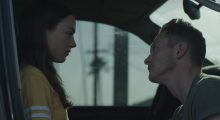
In Palm Trees and Power Lines, the feature debut of Jamie Dack, aprecocious but aimless 17-year-old named Lea finds herself drawn to Tom, a man twice her age who initially appears to give her the much-needed attention she does not have at home. As their relationship continues, however, Tom begins to assert his power in the relationship. Editor Christopher Radcliff explains the importance of keeping the film tied to Lea’s perspective and of editing the film to emphasize the patience evident in the script. Filmmaker: How and why did you wind up being the editor of your film? What were the […]
-
“We Didn’t Edit to the Script; We Edited Only With the Material”: Editor Lívia Serpa on Dos Estaciones

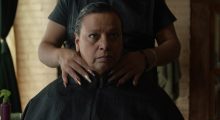
Dos Estaciones pulls equally from documentary and fictional aesthetics to tell its story of a tequila factory in the highlands of Jalisco. It devotes time not just to its protagonist, but also to the process of making tequila, the landscape and other inhabitants. Editor Lívia Serpa recounts how the edit was always based on the material at hand rather than the script and the emphasis on the overarching structure of the film. Filmmaker: How and why did you wind up being the editor of your film? What were the factors and attributes that led to your being hired for this job? […]
-
“This Film Expanded the Way I Think About Beauty and Form”: Editor Todd Chandler on I Didn’t See You There

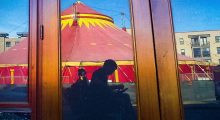
When a circus tent appeared outside the window of Reid Davenport, a visibly disabled filmmaker, he began to contemplate the history of the “freak show” and its relationship to his own aesthetics. This inquiry formed the backbone of I Didn’t See You There, for which Davenport captured images from his wheelchair and sought to make a film about how he sees the world. Below, editor Todd Chandler explains his desire to work on a film so aesthetically different from his own and why he likes to watch other films with his collaborators. Filmmaker: How and why did you wind up […]
-
“In Each Location I Knew How and When the Sun Would Hit”: Gerardo Guerra on Dos Estaciones

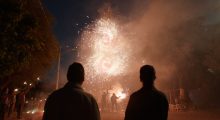
Red dirt, blue sky and green agave mark the landscape of Jalisco’s highlands, and they also form the basis of Juan Pablo González’s Dos Estaciones, which follows the heir to a struggling tequila factory as she attempts to reinvigorate the business in the face of plagues and floods. The film was shot by Gerardo Guerra, who discusses executing complicated setups with limited personnel, learning the finest details of the shooting locations and walking the line between documentary and fiction. Filmmaker: How and why did you wind up being the cinematographer of your film? What were the factors and attributes that led […]
-
“Who Does Visibility Serve and Who Does it Harm?”: Chase Joynt and Morgan M. Page on Their Sundance Doc Framing Agnes

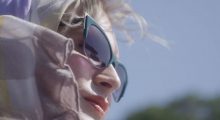
Framing Agnes, the title of Chase Joynt’s (No Ordinary Man) latest genre-queering film – world premiering in the Next section at this year’s Sundance – refers to a controversial trans woman who, in the 1960s, participated in a groundbreaking gender health research study at UCLA. It also refers to the fact that, historically, trans people have never been allowed to leave the frame. Or, paradoxically, enter the frame (if not a blond beauty like Agnes or Christine Jorgensen). So how does Joynt place Agnes in his cinematic frame without framing her? The answer is with an abundance of artistic ingenuity […]

